The final raid
In February 1945 as the Allied armies were fighting west of the Rhine, it was decided to renew the offensive to isolate the Ruhr industrial area from the rest of Germany. This plan specified attacks on road systems, waterways and 18 specific 'weak chains' in the railway network.
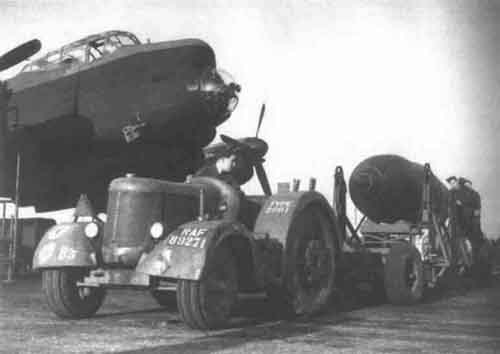
On March 13th 1945, when news of a successful Grand Slam test at the Ashley Walk bombing range reached 617 Squadron, two Lancasters flown by the CO Group Captain J.E 'Johnny' Fauquier and Squadron Leader Charles 'Jock' Calder took off from Woodhall Spa both loaded with a Grand Slam.
The Lancasters needed the entire length of the runway to become airborne and headed for the Bielefeld Viaduct. As they approached the target they saw, to their utter frustration, that the viaduct was completely obscured by cloud and they had to return to base with their loads intact.
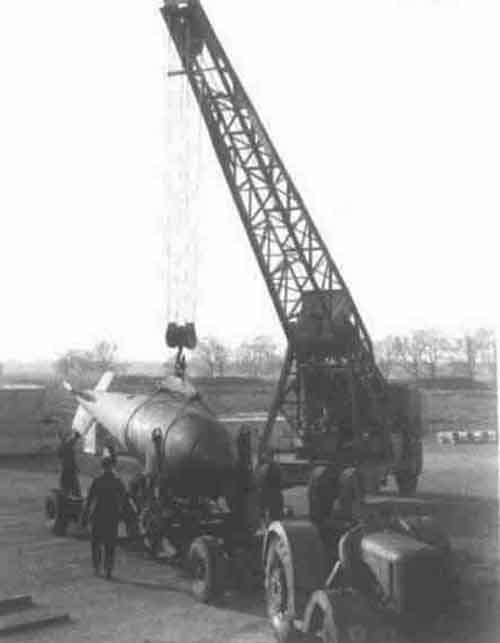
Lifting a huge Grand Slam onto its trailer.
The raid was rescheduled for the following day. As they were testing their engines the CO's Lancaster went unserviceable and he raced across the tarmac to 'commandeer' Calder's aircraft.
Seeing Farquier's Lancaster with one engine stopped and a figure racing towards him, Calder realised what was about to happen. He quickly opened the throttles and took off leaving behind a very angry CO.
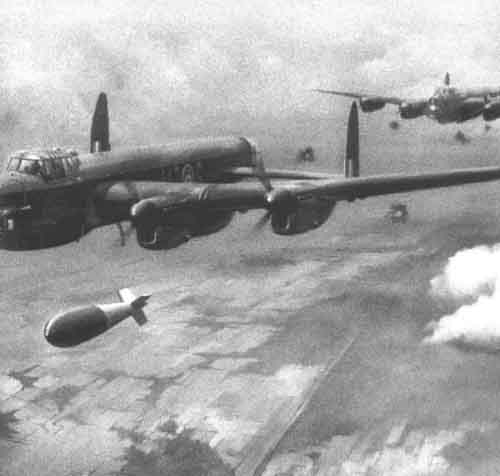
The sky was clear of cloud and the force skirted the flak around Bremen. They picked up the line of the railway heading south and half an hour later they were over the target.
At exactly 16:48hrs, after falling for 35secs from 11965ft, Calder's Grand Slam speared into the marshy ground a few metres west of the viaduct.
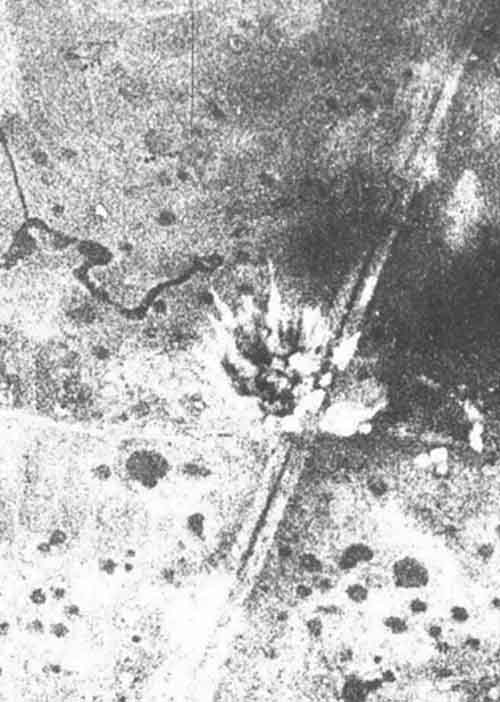
Eleven seconds after impact a vast core of marsh vomited up and when the mud settled both viaducts had collapsed into a huge underground cavity (a comouflet) created by the explosion.
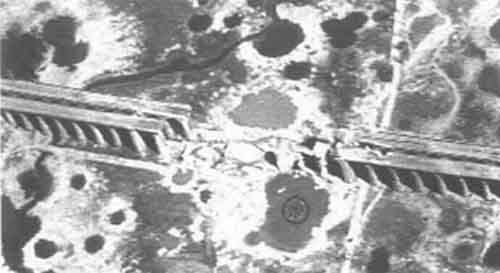
The crater 'above' the bridge was produced by a Tallboy and the Grand Slam crater is marked with an "x".
An excellent image, that belonged to his father, has been kindly provided by Gilliam Dwain.
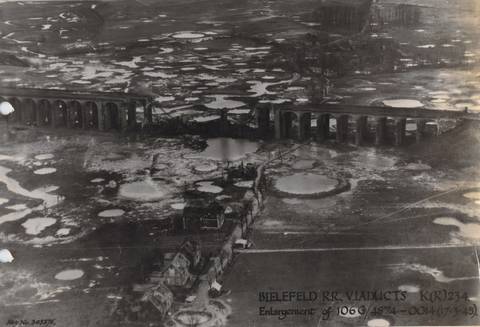
Click the image or this link to view a larger version (in a new window).
In fact 200ft of the western span (the goods traffic bridge) and 260ft of the eastern span (the passenger train bridge) was destroyed.
Additional 'Tallboy' explosions had significantly added to the damage inflicted on the bridge and a direct hit had completely blocked the southern approaches to the viaduct.
The photograph below (taken just after the war) shows the destroyed viaduct and the enormous 'Grand Slam' crater in the foreground.
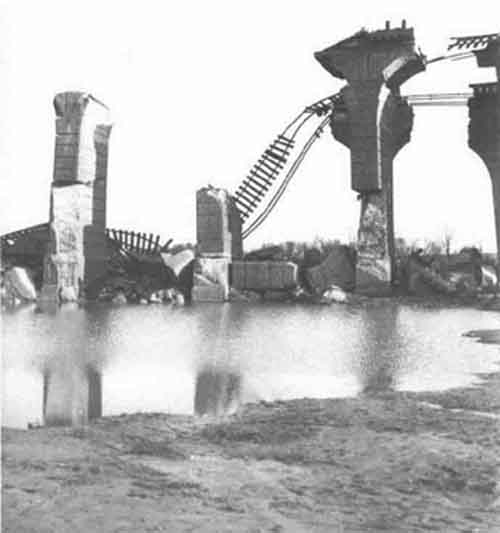
Although the 'Grand Slam' had not been dropped from its optimal altitude a single 10 ton bomb had achieved what over 3500 tons of smaller bombs had failed to do.
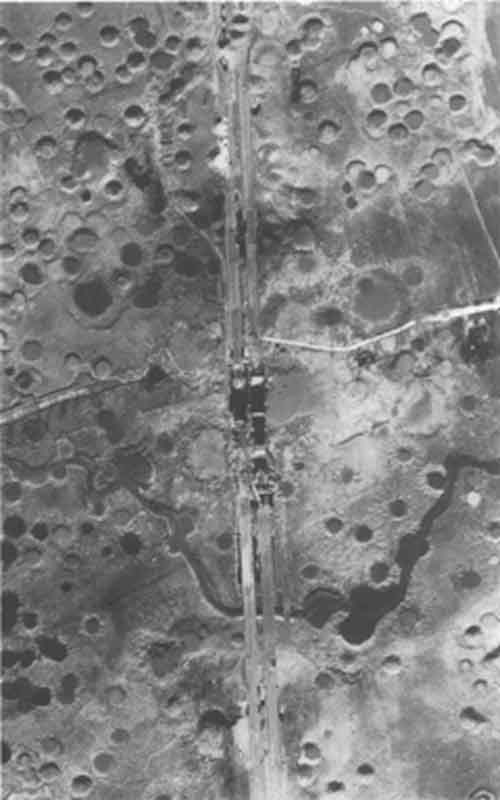
The lunar-like landscape surrounding the target was covered with literally thousands of craters.